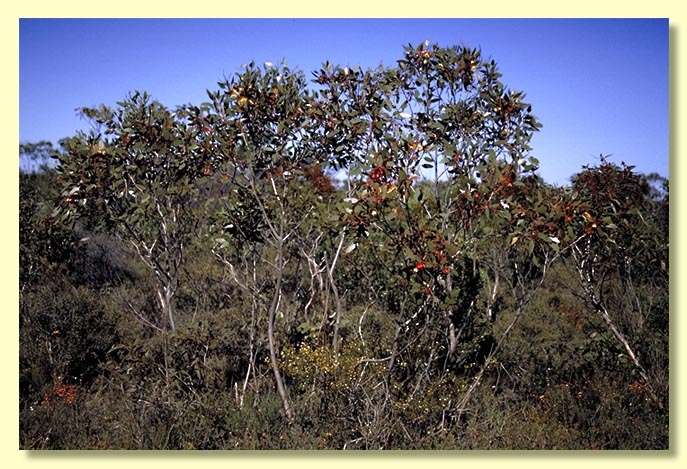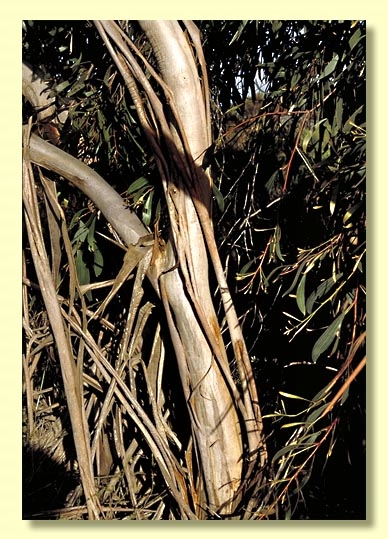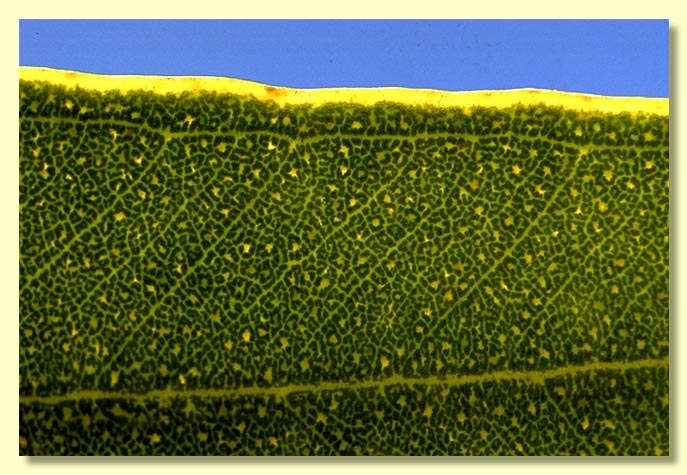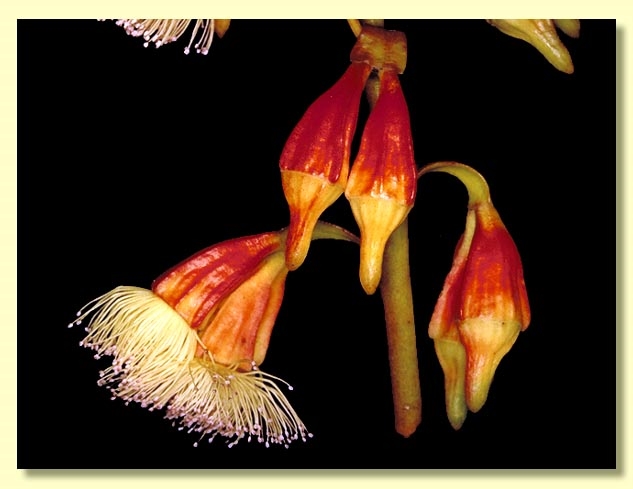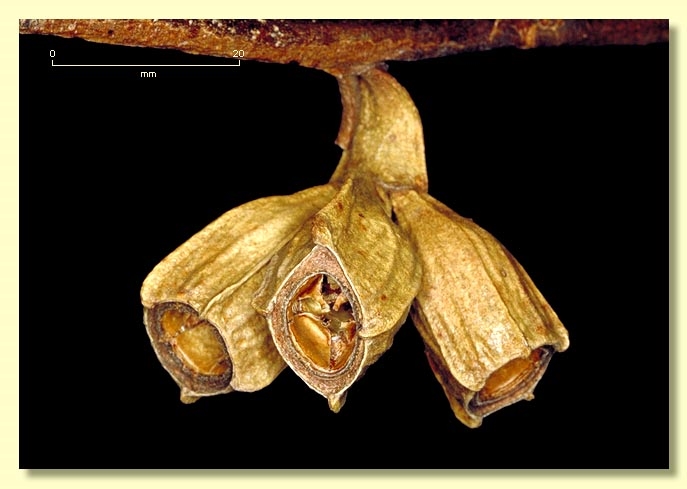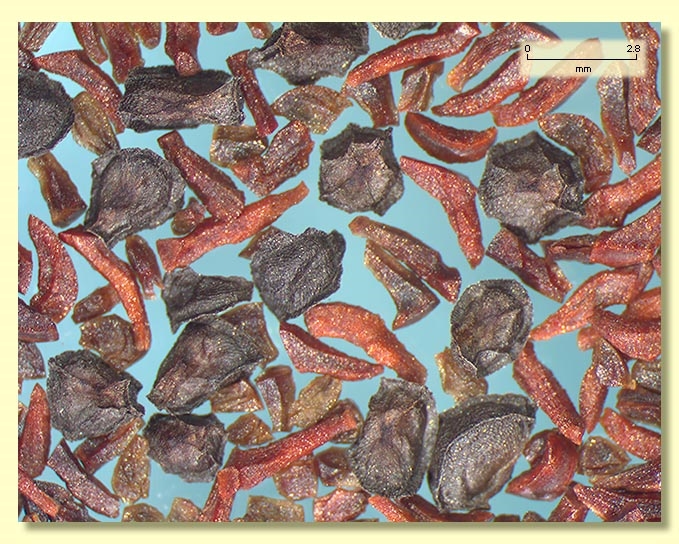Eucalyptus | Symphyomyrtus | Dumaria
Euclid - Online edition
Eucalyptus x erythrandra
Eucalyptus angulosa var. robusta C.A.Gardner, J. & Proc. Roy. Soc. Western Australia 19: 88 (1933). T: Kundip, near Ravensthorpe, W.A., Oct. 1930, H.Steedman; holo: PERTH; iso: NSW.
(Hybrid between E. angulosa X E. tetraptera, fide Brooker & Hopper (2002))
Bark usually entirely smooth, fawn to grey and cream or whitish grey, may have imperfectly shed broad ribbons near the base of trunk.
Pith oil glands present in or absent from branchlets.
Juvenile growth (coppice or field seedlings to 50 cm): not seen.
Adult leaves alternate, petioles 1.5–3.5 cm long; blade lanceolate, 8–13.5 cm long, 1.5–3.5 cm wide, base tapering to petiole, margin entire but lenticels present as dark regularly spaced spots, apex pointed, glossy, green, side-veins at an acute or wider angle to midrib, reticulation dense, intramarginal vein remote from margin, oil glands few, scattered, intersectional.
Inflorescence axillary unbranched, pendulous, peduncles very broad, 1.5–4 cm long, buds 3 per umbel, usually pedicellate, rarely sessile (pedicels (0)0.3–0.5 cm long). Mature buds pyriform in outline (2.4–3.2 cm long, 1–1.5 cm wide), four-angled to slightly winged, scar present, outer operculum shed early or splitting and persisting as fragments centred on the hypanthium angles, inner operculum bluntly conical to beaked (1–1.5 cm long), stamens inflexed, anthers oblong, versatile, dorsifixed, dehiscing by longitudinal slits, style long and straight, stigma blunt to rounded, locules 4, the placentae each with 6 vertical rows of ovules. Flowers cream to yellowish to pink. Base of flower (hypanthium) pink to red or reddish green at flowering.
Fruit on down-curved peduncles, usually pedicellate, rarely sessile (pedicels (0)0.2–1 cm long), cylindrical to square in cross-section, 2–3 cm long, 1.5–2.5 cm wide (including the narrow wings), disc descending vertically, valves 4, enclosed.
Seeds blackish brown, 2.5–4.5 mm long, distorted cuboid to angular-ovoid or obliquely pyramidal, marginal flange present, dorsal surface shallowly reticulate, hilum ventral or terminal.
Cultivated seedlings (measured at ca node 10): cotyledons reniform; stems square to rounded in cross-section; leaves always petiolate, opposite for ca 3 nodes then alternate, deltoid to ovate, 8–12 cm long, 4–7 cm wide, base tapered to truncate, dull, greyish green.
Flowering has been recorded in July, September and November.
A mallee of disjunct and widespread distribution of coastal and subcoastal southern Western Australia from the Stirling Range east to Mt Ragged, on sandy soil in heathland. The bark is smooth and the adult leaves are moderately thick and glossy green.
Eucalyptus erythrandra is a common and frequently collected hybrid of E. angulosa or E. incrassata and E. tetraptera. The buds and fruits are intermediate in size between the two parents, while retaining the squareness in branchlets, buds and fruit of the latter species.
The putative parents belong in Eucalyptus subgenus Symphyomyrtus section Dumaria because the buds have two opercula, stamens are strongly inflexed, ovules are in 4(–6–8–10) rows on the placentae and cotyledons are reniform.

